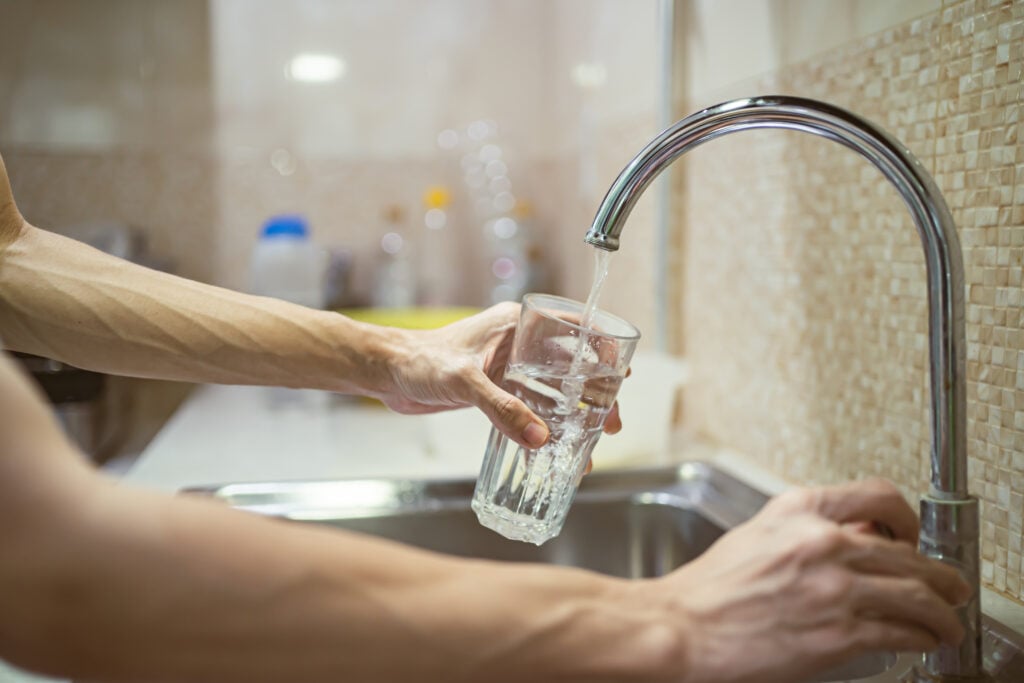Starting in late 2023, public awareness of microplastics surged as research began to reveal the hazards of consuming these tiny fragments of plastic present in food, packaging, and drinking water. Suddenly, consumers in America and Europe woke up to the fact that these minute plastic particles are everywhere, including our brains, intestines and livers.
Research also indicates that microplastics can accumulate in the body and potentially cause inflammation or changes in metabolism, reproductive health, and even increased risks of certain cancers. Suddenly, eliminating microplastics and the even tinier nanoplastics became a new priority for many people. But how can they be avoided?
Bottled Water Isn’t Always an Effective Method of Avoidance
After these reports were circulated by news sources, consumers began to seek ways to avoid microplastics and nanoplastics. More people now use glass and metal containers for food and water. Others choose to filter their household water rather than rely on bottled water. Those bottles of water seemed like a better choice than tap water for many years but suddenly, that idea was flipped on its head.
Over the next couple of years, researchers all over the world released additional studies, including one that showed that a single liter of bottled water could contain nearly a quarter-million microplastics. As a solution, some experts recommended drinking properly filtered tap water as an effective way to avoid consuming microplastics.
Household Plumbing Can Add to the Problem
Household plumbing can also introduce microplastics into the drinking water supply. Many modern homes rely on PVC or PEX piping. As they age or are exposed to temperature changes, mechanical stress or chlorinated water, these materials can release microscopic fragments into the water flowing through them.
While microplastics and nanoplastics can’t be seen with the naked eye, they can have an accumulating effect on the human body. They are so tiny that some can even enter our cells and cross the blood-brain barrier. This means that plastics in your water may not only affect your gut and liver but also reach the brain and nervous system. New research based on studies of deceased persons found that the quantity of plastic particles in the brain has increased significantly in the last decade.
Exposure to Plastics and Endocrine Disruption
One of the most concerning aspects of plastics in drinking water is their ability to interfere with the human endocrine system. Chemicals such as bisphenol-A and phthalates disrupt hormone balances or block hormones like estrogen and testosterone. Over time, even exposure to very low concentrations can have a harmful effect.
While legislation has limited the use of these two types of chemicals, they are still present in some plastic bottles. Some states and countries have mandated the replacement of bisphenol-A, but the replacement chemicals (BPF or BPS) may be just as harmful. The conclusion one could draw is that bottled water is not an effective method of obtaining pure, healthy drinking water.
Providing Your Family with Clean Water
As the science related to microplastics grows, many homeowners are realizing that they need a new solution in their home to eliminate microplastics from their water. A high-quality filtration system can reduce or eliminate microplastics, along with a wide range of chemical and biological contaminants. The systems capable of removing these particles include:
- Reverse osmosis
- Nanofiltration
- Ultrafiltration
While whole-house systems capable of removing both microplastics and nanoplastics are pricey, undersink systems are far more affordable.
Important: Test Your Water Before Choosing!
When you test your drinking water before choosing a filtration system, you can tailor your system to the contaminants present in your water supply. Not every home has the same contamination risks. Some households may face higher levels of pesticides, solvents, or heavy metals depending on their water source and plumbing. A professional water test from a certified laboratory provides a detailed snapshot of what’s in your water, allowing you to select the right filtration technology for your needs.
ETR Laboratories Provides Fast, Accurate Test Results
Thousands of homeowners, municipal water systems and businesses that need pure water trust ETR Laboratories. Experienced staff and advanced testing equipment mean test results are detailed and precise. By testing your water before and after installing a filtration system, you can be confident that you have achieved the best water quality possible for your family.
ETR Laboratories now offers a test for microplastics and nanoplastics in water! Using a Scanning Electron Microscope, the lab provides particle counts of each plastic size detected. To analyze your water, order the Microplastics and Nanoplastics Water Test today!

